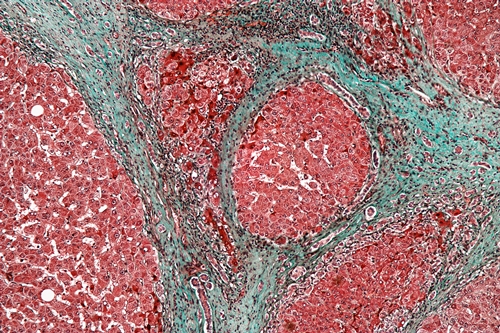15 January 2016. Organovo Holdings and University of California in San Diego are collaborating on isolating and better understanding human liver cells for the production of 3-D printed liver tissue. Financial and intellectual property aspects of the agreement were not disclosed.
Organovo designs and produces human tissue for research and transplant, using its own bio-printing technology. The company says it combines engineering with biology to produce living tissue that acts like natural human tissue. By adapting 3-D printing, says Organovo, it can produce tissue in three dimensions without first producing a framework or scaffold, yet still begin with a patient’s own cells as the basis of new tissue, thus avoiding problems of rejection encountered with donated tissue.
In this agreement, Samsara Sciences, Organovo’s newly formed subsidiary, will partner with UC-San Diego surgery professor Tatiana Kisseleva to develop techniques for isolating liver cells. Samsara Sciences began operations on 13 January to produce hepatocytes, the most prevalent cells in the liver, and hepatic stellate cells in the liver associated with development of fibrosis, or excessive scar tissue, and other key functions.
Organovo plans to use these liver cells in its exVive3D human liver tissue, produced for toxicology testing and preclinical drug research, and eventually for transplant. “Our ultimate vision,” says Sharon Presnell, Organovo’s chief scientist in a company statement, “is to supply a comprehensive portfolio of tissue-specific cells that are tailored for use in the production of the multi-cellular 3-D tissues that are poised to change the landscape of drug discovery and regenerative medicine.”
Kisseleva’s lab at UC-San Diego studies development of fibrosis in the liver and diseases related to fibrosis. Her work with Samsara is expected to better understand traits and functions of hepatic stellate cells, and their role in promoting disease or stability in the liver. Liver transplant surgeon Alan Hemming at UC-San Diego is also expected to take part in the project.
The company and university say the emphasis on hepatic stellate cells is different from other approaches for regenerating liver tissue, which generally produce hepatocytes alone rather than supporting cells. “Samsara’s resources will allow us to generate high-quality cells to conduct translational research on liver injury, cirrhosis and cancer,” says Kisseleva in a university statement, “while Samsara benefits from our expertise in liver cell isolation and characterization.”
Read more:
- Brain Tissue Banks Partner on Autism Research
- Simple Scaffold Developed for Synthetic Heart Tissue
- Purdue Spin-Off Designing Customized Synthetic Tissue
- 3-D Tissue Assembly System Designed
- Yale Univ, Organovo to Develop 3-D Print Transplant Tissue
* * *


 RSS - Posts
RSS - Posts
You must be logged in to post a comment.